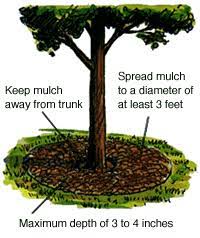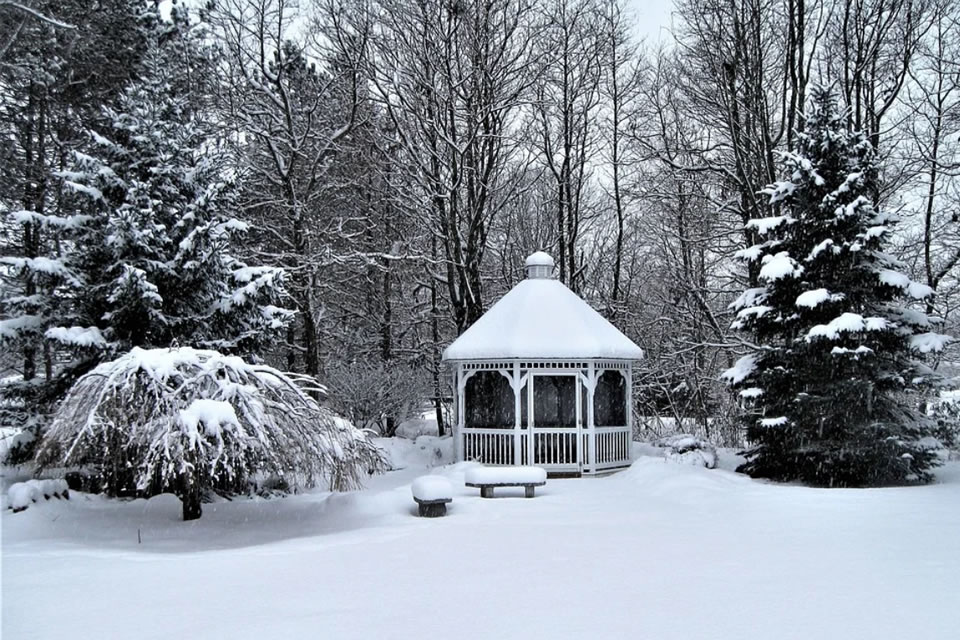Tree Health for the Winter Season
- Wrap the trees
Wrapping your trees provides a layer of protection that helps them fight off winter temperature sunscald and other bark-damaging conditions. “Sunscald” is a term used for injury caused by huge fluctuating winter temperatures. Cherry trees are very susceptible to freezes. The cracks of the cherry trees of the tree collect water and freeze, the ice expands and creates damage to the tree even rupturing some tree cells and eventually killing off the limb that has sunscald. You can wrap your trees with frost fabric. In doing so, wrap your trees from below the lowest branch to the bottom of the trunk. You don’t want moisture to collect and possibly freeze in the wrap which may cause sunscald damage. Remove the wrap when winter is over or when the danger of freezing is over. If you must use ice melt products in the vicinity of your trees, avoid using any that contain sodium chloride. Rock salt absorbs water and thus interferes with the roots’ ability to absorb water, oxygen, and nutrients.

- Mulch around the trunk base. Apply 2 to 4 inches of wood chips, bark or other organic mulch near the base of the tree, but not against it, will assist in reducing soil evaporation, improve water absorption and insulate against temperature extremes. If there is repeated freezing and thawing during the season, this can cause soil to expand and contract, which can also damage roots.

- Recycle the leaves. Instead of disposing of autumn leaves, consider layering them around the base of each tree as mulch, or blend them into the yard with a mulching mower to retain nutrients. Leaves provide an extra layer of protection for the tree so it actually becomes the blanket for the tree in the winter.
- Water the trees. Before turning off the outside faucets for winter, water trees from the trunk to the outside ring of the canopy. The best time for winter watering is on warmer days, when snow, if any, has melted off and the temperature is above 40 degrees.
- Focus on younger trees. With less-established root systems, these trees require the most care.
- Prune during winter. Late winter is the best time for pruning most tree species, but it can be done whenever trees are dormant over the winter months. Common reasons for pruning are to remove dead branches and improve tree form. Always prune just outside the branch collar – the point where a branch joins a larger one – and don’t remove any branches without good reason. Contact a well-respected tree service company or arborist.
- Tips. Here is a simple guide to winter tree care.
- Cool dry winds suck moisture from evergreens.
2. Animals may eat whatever they can find to include leaves, twigs and bark in winter to survive.
3. Don’t break off accumulated ice on limbs, this may break the limb itself, instead pour warm water over the ice to remove it or reduce the bend in the tree or limb.
4. When you properly maintain your trees during the year here in Atlanta, they are less likely to become susceptible to freezes, becoming cracked and dried out during winter, and as a result you are less likely to need emergency tree services, like tree removal and tree cutting. The trees become stronger and healthier to help combat winter as a result.
5. When planting trees and shrubs, they should be given approximately 6 weeks to establish roots before a heavy freeze, but it’s ok to plant them anytime the ground is workable.
